Do you find that your dog has a habit of biting things every now or then? Whether it be furniture, shoes or curtains? At this rate, the whole house might be destroyed while leaving you in a dilemma. Before we share with you 7 simple steps to help with excessive dog chewing, let’s first try to understand what triggers this behavior:
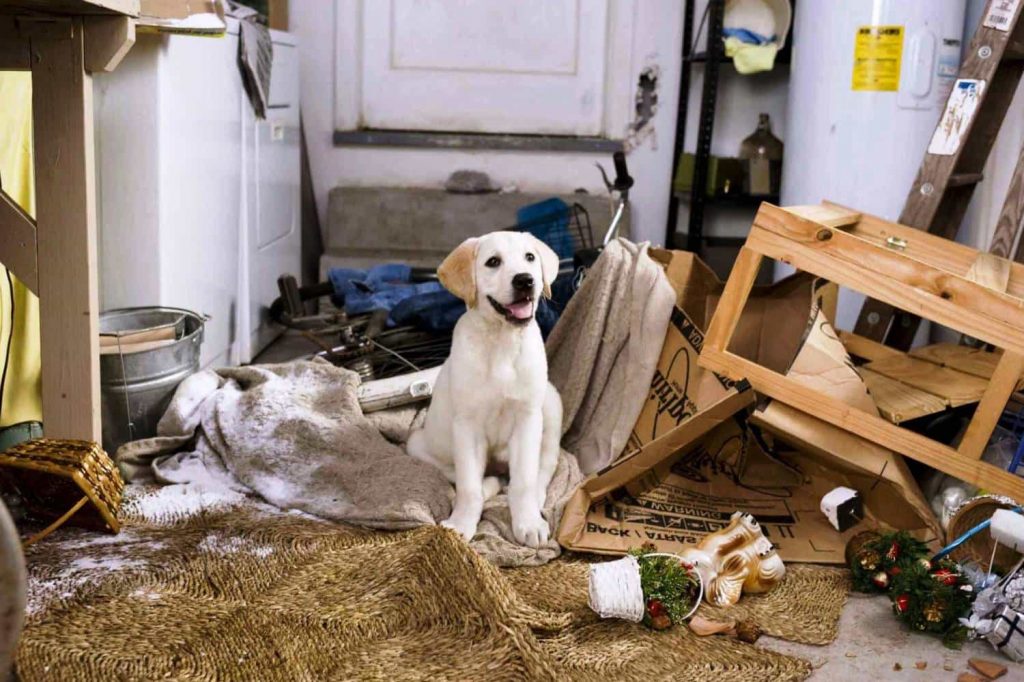
So why do dogs chew?
Chewing is a natural instinct to dogs and has its benefits, but the problem arises when the things around your house fall victim to it. Dogs are curious creatures; They explore the world through sight, sound, smell and taste.
To put it simply, a dog uses its mouth a lot like how humans use their hands, they may not be tasting your shoe but feeling it instead.
There can also be other factors contributing to it such as:
- It is stress-relieving.
- Teething, which occurs generally in pups from the age of three to six months.
- He/she finds the item very enjoyable to chew due to the taste, texture and odor – especially if it has the scent of his/her favourite human.
- Boredom.
In some serious cases, the chewing can be due to separation anxiety. This problem may stem from a situation where a dog is left alone for an extended period of time. It will be better to consult a vet to overcome this issue. To learn more about what causes anxieties in dogs and how to curb it, the dog adventure has covered an informative blog post of it here.
And remember, do not resort to scolding!
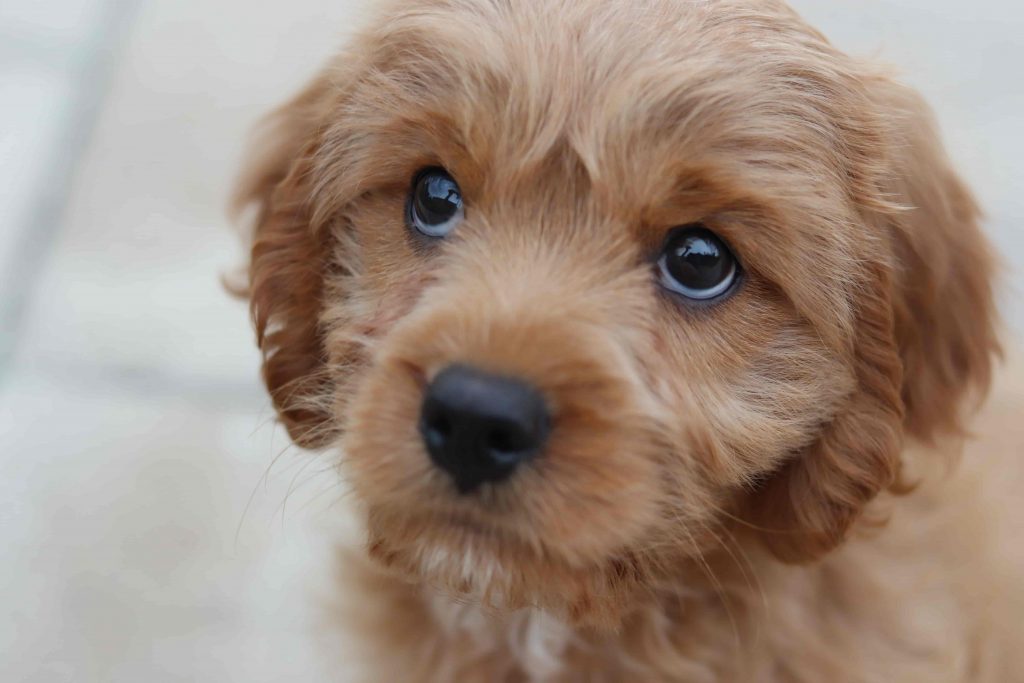
It’s already too late by the time that you find the item that has been chewed. Whatever the dogs chew, it’s important to discipline them immediately. Any scolding is given after they’ve stopped the undesired action will have no effect on a dog’s future behavior. It may also provoke other undesirable behaviors.
Now let’s have a look at how you can tackle the excessive chewing
7 simple steps to help with excessive dog chewing
1. Put important items out of reach
Position your valuable items away from your pup in drawers or on shelves as you should be able to understand what they would normally bite. Also, don’t forget to cover your dustbin as they like to explore it every now and then for food scraps.
The concept applies the same for humans as well, if you want to get rid of a bad habit, make it as difficult as possible to access it.
2. Crate your pooch in a safe area
Confining your dog into a cage or a set area is another useful way to reduce the likelihood of biting, especially when you can’t supervise him/her. You may leave them there for up to six hours, but ideally, it should be no more than 4 hours as they need toilet breaks – even less for a puppy. However, make sure that your dog has enough space to exercise and water to drink.
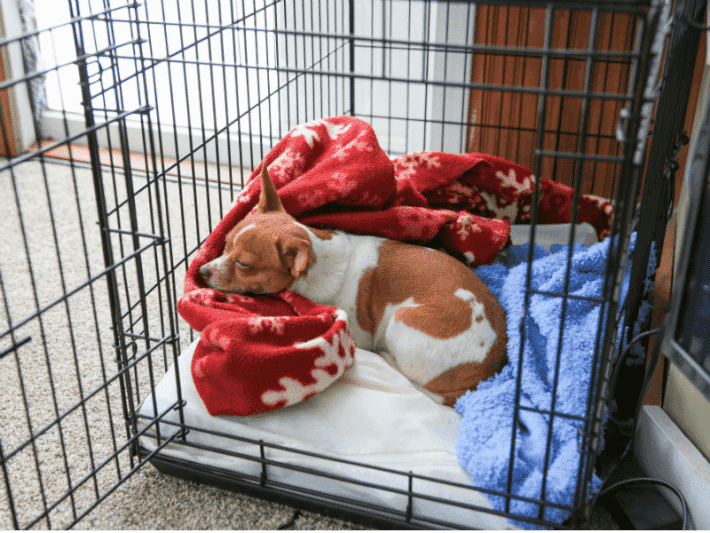
It would be good if you can start crate training for your pup while they’re young. That would make the implementation much easier.
3. Nudge them with a ‘no’ or ‘eh’ in a low voice
I’m sure many of the pet parents in Malaysia can relate this, just a sound of it captures your pup’s attention though sometimes it may take more than once for it to be successful. But hey – it works since the pup will take it as a sign of disapproval.
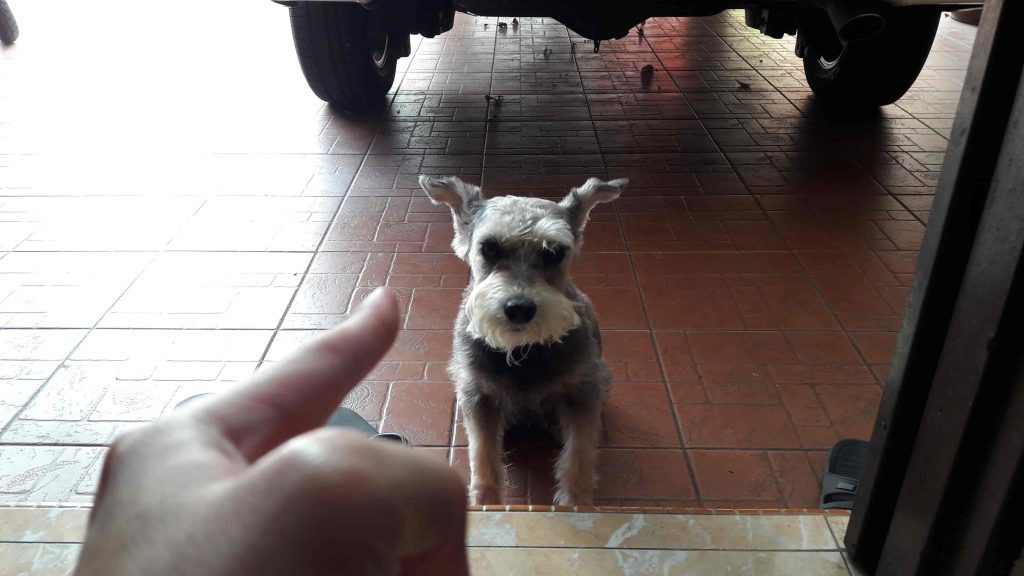
4. Give your dog chew toys
Choose an appropriate chew toy for your furkid and make it special and attractive to him. Also, remember to praise him when he has it and pick up the toy to play with him. This teaches your dog that chewing is not wrong – just chewing the wrong things.

It can be a good idea to also swap the toys every 2 to 3 days and pack the others in a drawer. This can stir up excitement in them whenever you reach out for that drawer to take out a “new” plaything.
5. Give your dog chew treats
A Kong-type chew toy is a great option. You can add your pup’s favourite treats into it. This will encourage him/her to chew on the toy instead of inappropriate items since the toy dispenses the treats when bowled around. You can buy a KONG toy through Perromart.com.my (online pet store).

Since our air-dried duck gizzards and lamb liver dog treats are chewy, flavourful and nutrition-rich, inserting them into the KONG toy will surely double the fun!
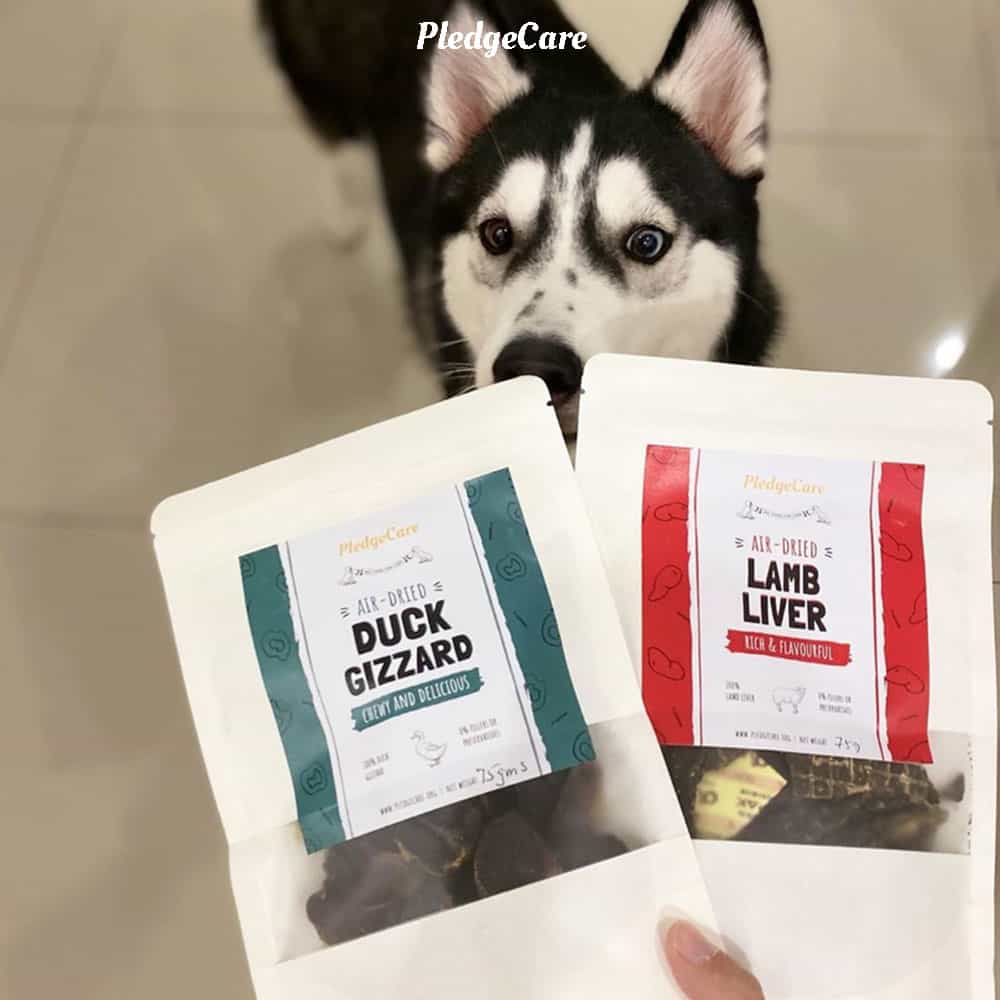
Additionally, you may also reward your pup with a treat in exchange for the toy that he/she picked up to play. Repeat the rewarding process as you throw the toy to allow your pup to fetch it and bring it back.
6. Increase his exercise duration
Some dogs look for ways to entertain themselves when boredom strikes, especially the active ones; And chewing is one of those options. That is why it is important to make sure that your pup gets sufficient exercise or playtime. A tired dog is a good dog.
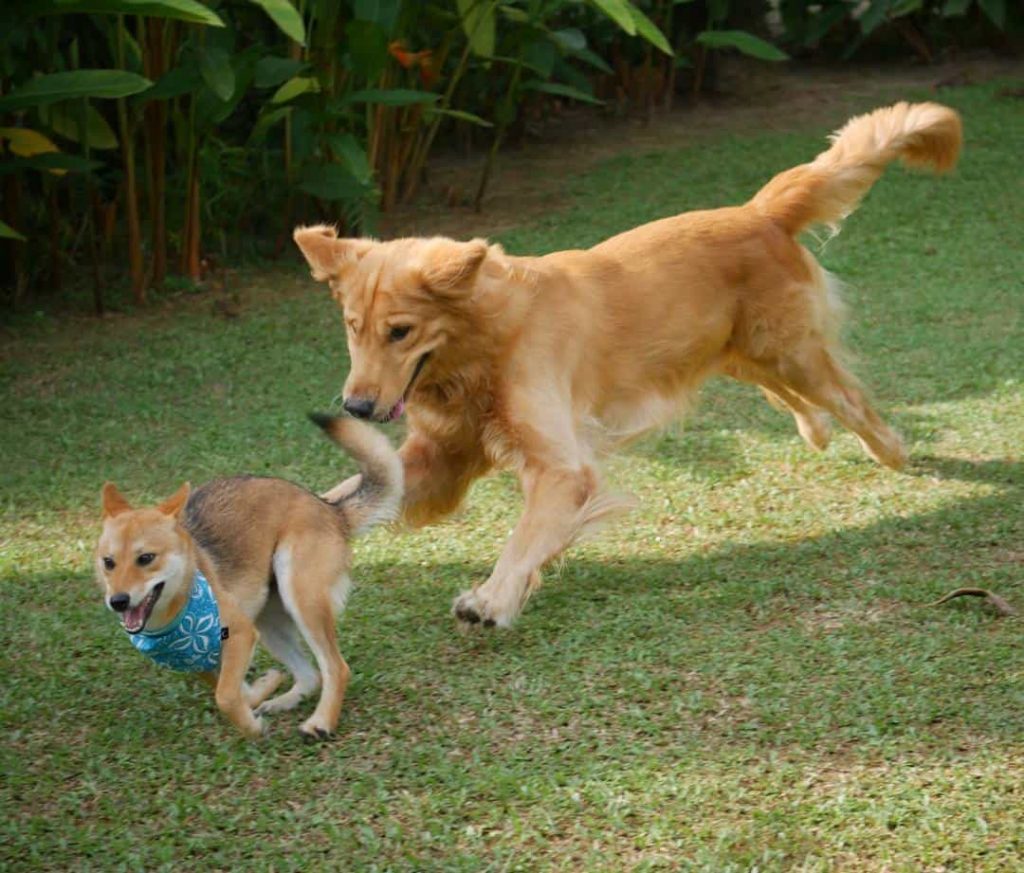
On the other hand, it is necessary for them to get a good amount of mental stimulation as well. You can achieve this by providing them with training or social visits.
7. Make valuable items unpleasant to your dog with a taste deterrent
Dog’s don’t really like the flavour and smell of vinegar and bitter apples, so you may use this to coat on items that you don’t want them to chew on. This may not work for all dogs but it is definitely worth a try. Here is a recipe that you can easily make yourself at home. Not only it is safe and convenient but it’s natural as well.

The ingredients are fairly easy to buy online and in supermarkets. One of our teammates at PledgeCare tried it before and it worked great for his pup. So why not?
So here you have it! These 7 simple steps to help with excessive dog chewing and we hope that it helps. Please feel free to share your own ideas down below in the comment section:

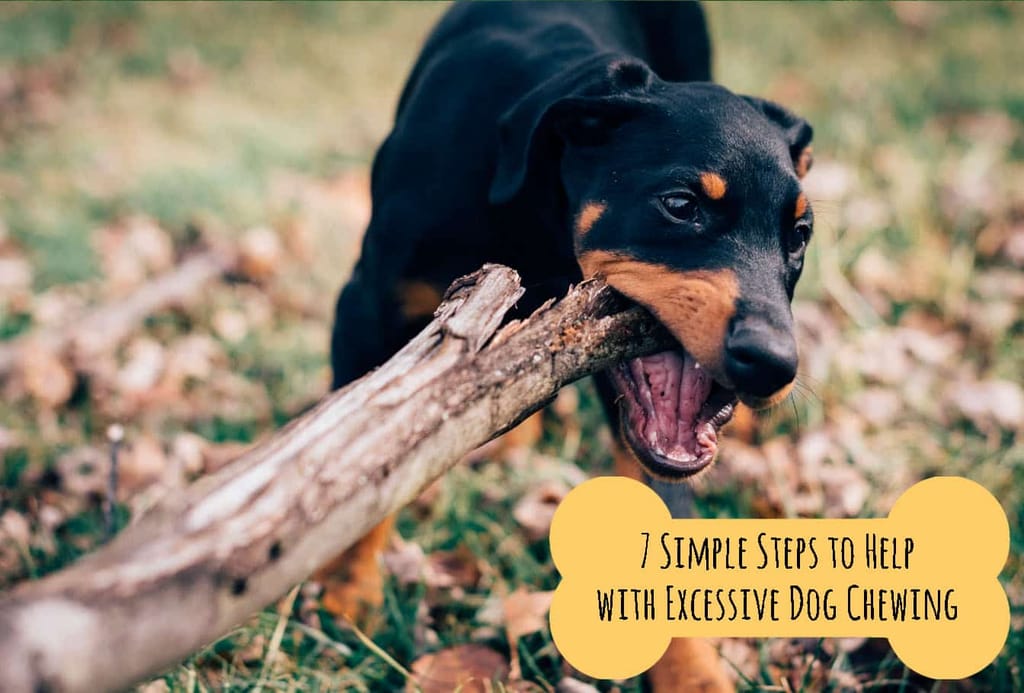
Such a helpful and informative post! Excessive chewing is a common issue in dogs, and diet can definitely be a contributing factor. High-quality pet food can often help reduce this behavior—when nutrition is balanced, dogs tend to feel and act better. Love seeing content like this!
My next door neighbor is considering adopting a puppy from a shelter in Colorado but he’s not sure what to do if it has weird chewing habit. Well, I hope by reading this article he would be convinced to choose the right puppy eventually. Thanks for letting us know that adding the frequency of physical activities for our pets would prevent them from chewing out of nowhere as we’d make them feel less bored.